Grid Results
I ended up activating seven grids, skipping the planned EM12 location on Sunday. Here’s the overall results by grid.
- EM03, 17 QSOs, over one hour of operation in a rainy Saturday.
- EM02, 13 QSOs, with more rain.
- EM01, 20 QSOs, rain and mud, but good results from stations to the south.
- EM11, 17 QSOs, no rain on Sunday.
- EM21, 17 QSOs.
- EM22, 13 QSOs.
- EM23, 14 QSOs.
Travel Time
Total operation time was right at 10 hours with most grids operational for an hour. Travel and set up time, not counting before or after the contest came in at 10 hours. Add another four hours of travel before and after the contest.
Location Set Up
Set up at each location went well except for the last place. There I mounted the antennas and starting pushing up the mast but the mast came out of the base unit and tipped over. Bent the antennas a bit, but they bent back into shape and I managed to work the average number of QSOs there.
I was also visited by a horse, perhaps in sympathy for my wrestling with the antennas. See the photo above.
Rain Arrangements
I coped with the rain on Saturday by draping a tarp over the back of the rover mobile. That worked generally well. I guess I need to consider how to set up operation seated inside the vehicle. That would have been great in June in the 110 degree heat and helpful in September in the rain.
Rover Hat Tip
In previous contests it’s been pretty rare for me to work any rover stations. That requires a fair bit of coordination and good antennas. This time, however, I worked a number of rovers. They included W5VY/R, KG5UCA/R, KD5IKG/R, KA5D/R, and AC5RN/R. In particular, KG5UCA/R texted me several times to set up efforts to work each other from new grids.
Future Improvements
There’s always room for improvement. I’ve been thinking about adding 222 MHz and may just spring for a Downeast Microwave 50 watt transverter and a Directive Systems rover yagi. I may also replace my 70 cm Diamond yagi with a Directive Systems rover yagi. I also need to spend a little time building my muscles for pushing up the mast.
For logging I’ve been using MacLoggerDX in contest mode along with WSJT-X and JT Bridge. This combination works well to get everything into the log. Then I use N3JPFs VHF Contest Log to generate the score and cabrillo file. I don’t think I need to make any changes there.
I do need to give consideration to operation while sitting in the car. The trouble is trying to rotate the antenna while leaning out the door and looking up with that set up. My chiropractor has a major repair job when I’ve tried that in the past. Perhaps I need to investigate a roof rack mount for the antennas along with a rotator. That would be nice.
Thanks to everyone who tracked my progress and added a new grid to their logs and to mine.
 FYI — I upload all my logs to Logbook of the World under the call sign K5ND. This includes all rover grid activations for contests or satellites. In June 2019, I established a K5ND/R certificate on LoTW and uploaded all my rover logs.
FYI — I upload all my logs to Logbook of the World under the call sign K5ND. This includes all rover grid activations for contests or satellites. In June 2019, I established a K5ND/R certificate on LoTW and uploaded all my rover logs.
Photo Gallery
Here’s a photo gallery, dark skies and rain. Mouse over the image for the grid location.

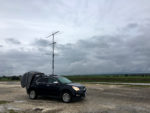
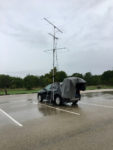
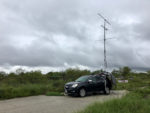
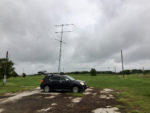
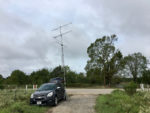
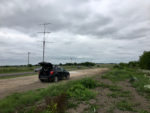


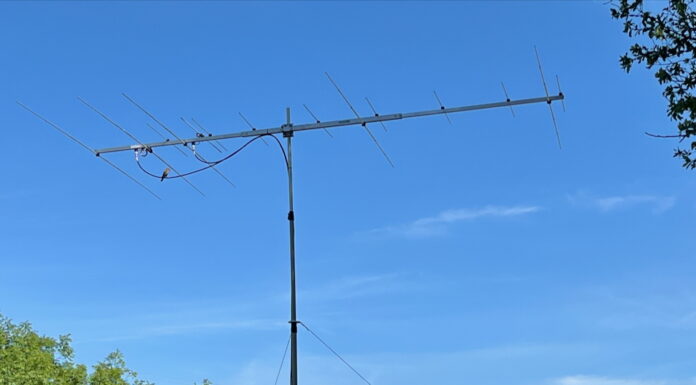







Very inspiring. Makes me want to get outside and do the same. Great setup.
It was exhausting. But it only happens a few times each year. It’s fun and lights up a few logs with new grids in addition to my own. Thanks for your comment. 73.